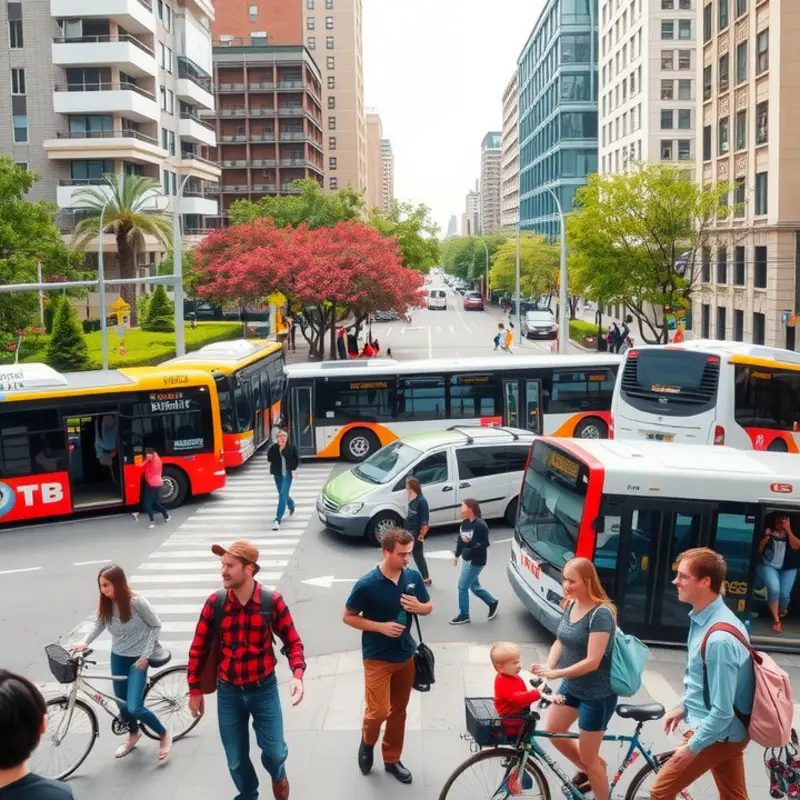Renting your first apartment or home is like riding a roller coaster. Exciting, a bit scary, and potentially a bit nauseating if you don’t buckle up and prepare! For young adults, first-time renters, young professionals, couples, and families, finding rentals near public transit can make the entire journey smoother. Who wants to be stuck in traffic when you could be chilling on the tram, scrolling through TikTok? Public transit offers accessibility, convenience, and a dash of adventure, making it a prime factor in your rental decision. In this guide, we’ll explore why rentals near public transit are not just a bonus but a game-changer. You’ll also learn practical tips for finding rentals that suit your lifestyle, pocketbook, and schedule. So grab your coffee, dust off your house-hunting hat, and let’s dive into the world of rentals that win the public transit lottery!
Why Go Transit-Friendly? Benefits for Every Renter

Choosing a home near public transit comes with a multitude of perks that can enrich your daily life. One of the most immediately noticeable advantages is the cost savings. By living close to a bus stop or metro station, you can dramatically cut down on the expenses associated with car ownership. Think about it—you could save on gas, insurance, maintenance, and parking fees. For many, the cost of public transit passes is far more affordable compared to these persistent vehicular expenses. Not to mention, some employers offer incentives or discounts on public transit passes, amplifying these savings further.
Owning a car isn’t just about money. The convenience factor of having reliable public transit at your doorstep is invaluable. A nearby transit stop can transform the dreaded daily commute into a more manageable, less stressful part of your day. You can use the commute time to catch up on reading, listen to your favorite podcasts, or even meditate—all things that are difficult when focused on the road. Imagine reclaiming those extra minutes of your life to do something meaningful or relaxing.
Beyond personal savings and convenience, there’s a unique community aspect to living near public transit. Neighborhoods with good public transit links tend to be more vibrant and connected. This is partly because they’re usually walkable and have amenities clustered around transit hubs. Whether it’s local cafes, shops, or parks, having access to these venues fosters a sense of community. Living in such an environment encourages you to engage with your neighbors and participate in community activities, enhancing your social life. This sense of belonging can be a significant benefit, especially if you’re moving to a new area and starting afresh.
Living transit-friendly also brings some quirky advantages that often go unnoticed. For night owls or those with early morning schedules, being close to transit options can provide a sense of security and freedom. You’re less tethered to daylight constraints and can enjoy any city until the last bus or train. Moreover, a transit-passenger lifestyle can lead to a healthier you. In many cities, transit options are linked to biking and walking trails, offering you a seamless blend of transportation and physical activity.
Additionally, public transit reduces the environmental impact. By opting out of daily car rides, you’re actively contributing to a reduction in air pollution and traffic congestion. This might not meet eco-warrior standards, but it’s a step in the right direction that can significantly impact urban air quality.
Likewise, having easy access to public transit can be a game-changer when hosting visitors. Friends or family can navigate easily without relying on you as their personal chauffeur. You’ll save both time and stress while allowing them the freedom to explore independently.
In conclusion, living transit-friendly provides broad-ranging benefits. Whether it’s saving money, nurturing creativity, or fostering community bonds, a well-connected home changes everything. For tips on making the most of your living space regardless of size, check out some ideas on healthy eating in small spaces.
Smart Search Strategies: How to Find Your Perfect Rental

Searching for the ideal rental near public transit can seem daunting, but with some savvy strategies, your perfect spot is within reach. Firstly, online platforms are your go-to tool. Start by exploring real estate websites that allow you to filter results based on proximity to transit stations. Many platforms offer features to save your favorite listings and set up alerts for new rentals meeting your criteria.
When evaluating listings, consider the location’s accessibility. Check walking distances to the nearest transit hub and the types of transit available—buses, trains, or trams all have different schedules and coverage areas. A potential shortcut is using map services to visualize real-time transit routes and times.
Commuting times are crucial. Utilize route planners to estimate travel times from the rental to work or other frequent destinations. Remember, transportation methods can significantly impact your day-to-day life, so prioritize those with shorter and more direct commutes.
Next, assess nearby amenities. A neighborhood convenient to your lifestyle can make a significant difference. Look for grocery stores, cafes, and recreational areas within walking distance or reachable via public transit. A vibrant local area can enhance your living experience while minimizing travel.
Networking can also be vital in landing a great rental. Reach out to local social media groups or community boards to discover hidden opportunities. Locals often have insider knowledge of upcoming vacancies that haven’t hit the market yet. Additionally, consider checked-out resources like local housing forums or community centers—they sometimes list rentals known to be transit-friendly.
Part of savvy searching involves avoiding pitfalls that might lead to rental horror stories. Verify the authenticity of listings by checking the landlord’s or agent’s credentials. If a deal appears too good to be true, it likely is. For more on navigating lease agreements, you might find the insights from Negotiating Lease Terms helpful.
Finally, integrate some fun shortcuts to ease your search process. Engage with smartphone apps that specialize in matching users with ideal neighborhoods based on preferences and habits. A bit of creativity can shorten your search time significantly. Smart searching using these strategies ensures your rental quest is organized and efficient, bringing you closer to finding a rental that meets all your needs with minimal hassle.
Final words
In the quest for the ideal rental, proximity to public transit emerges as a true hero, ensuring less time in traffic and more time enjoying life’s adventures. From saving money on commuting costs to opening up endless opportunities for networking and discovering new neighborhoods, the perks are plentiful. By following the practical tips shared in this guide, renters—whether they’re first-timers, young professionals, or families—can confidently approach their house-hunting journey. Now that you’re equipped with this knowledge, go forth and conquer the rental market with a grin and a sense of humor. And remember, a little laughter goes a long way, especially when you find a place that suits you perfectly!









